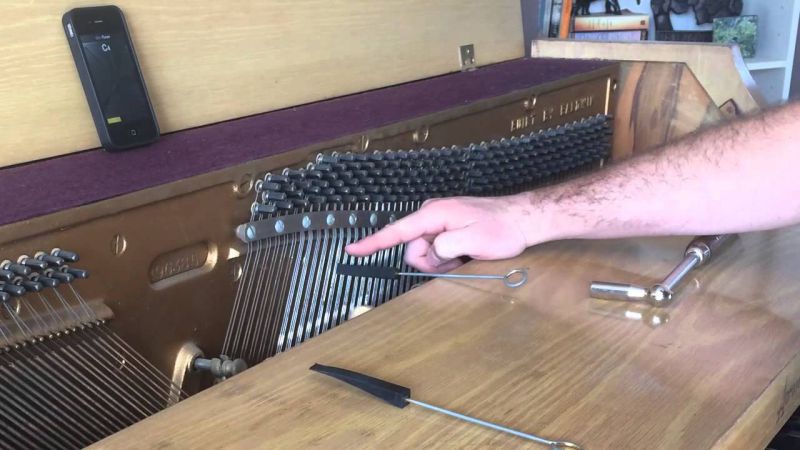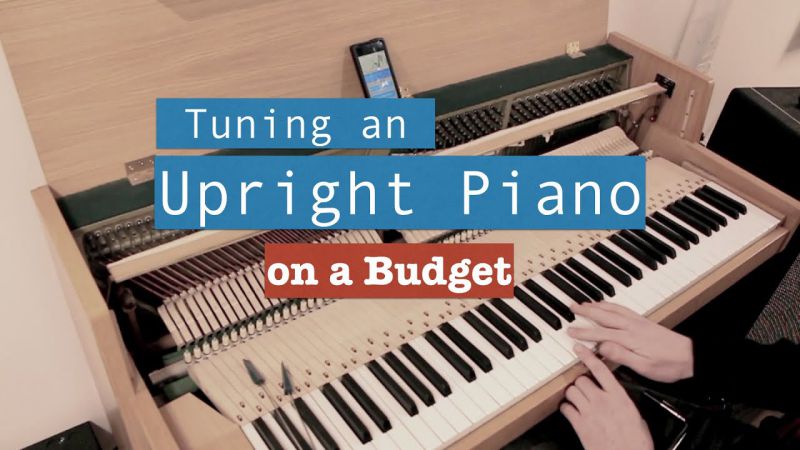A piano is a magnificent and versatile instrument that can add a rich and dynamic sound to any music. Lots of people think that maintaining a piano is only for the skilled pianist, but for a beginner pianist, it is necessary to know how to tune an upright piano.
However, maintaining a piano’s beautiful tone requires more than just playing it, it requires regular tuning. A piano should be tuned at least once a year, if not twice, to keep it in top condition. While professional piano tuning services are available, the cost can add up quickly.
If you’re looking for an alternative, consider “How To Tune An Upright Piano” as an option. Tuning a piano yourself may seem daunting, with over 200 strings to tune, but with the right tools, a strong ear, and a lot of patience, anyone can learn the art of piano tuning. Let’s get into the further details! Learn to play piano
Jump To Heading
What Are The Benefits Of Learning To Tune An Upright Piano?
For those looking to save money and take control of the maintenance of their piano, learning “How To Tune An Upright Piano” is a valuable skill. However, it’s important to understand that tuning a piano yourself is a challenging and time-consuming task that requires a great deal of patience and skill.
Professional piano tuners spend years perfecting their craft, developing specific skills and techniques to provide a tune that is both accurate and stable. If you’re new to piano tuning, it’s essential to understand that the process of tuning each pin may seem straightforward, but it’s a slow-going task.
Professional piano tuners are trained to provide a tune that is not just accurate but also stable and long-lasting. If you’re not sure about dedicating years to practice and mastering “How To Tune An Upright Piano” or if you’ve never tuned a piano before, it’s a good idea to reach out to a professional piano technician who can provide you with a professional tuning service.
Furthermore, it can be a time-consuming and challenging task, but with the right tools, guidance, and dedication, anyone can learn to tune their own piano. However, if you’re not sure about dedicating years to practice and mastering the skill, reaching out to a professional piano technician is always a good idea.
Related Posts:
Essential Equipment To Tune An Upright Piano:
When it comes to tuning an upright piano, it is important to gather the right tools with you while tuning an upright piano., because they also help you achieve a more accurate tuning. The below-listed are the tools that you need to gather with yourself while tuning an upright piano:
An Electronic Chromatic Tuner:
This tool is a small device that helps you identify the current pitch of a key and how far off it is from the target note.
Mutes:
These are inexpensive rubber wedges that you place on piano strings to dampen the sound of specific strings and isolate a single string to tune it.
A-Tuning Lever:
This is the most essential tool when it comes to tuning a piano. A tuning lever, also known as a tuning hammer, wrench, or tuning key, is a small, tapered tool that allows you to adjust each tuning pin individually. Without a tuning lever, you won’t be able to tune your piano, and using any other tool could damage the instrument.
Screwdriver:
Some pianos, such as upright pianos and grand pianos, may have a cabinet or door that protects the strings and soundboard. In this case, it’s a good idea to keep a screwdriver on hand to easily remove these pieces and access the strings.
Dust Cloth:
Many pianos sit and gather dust for years, so keep a cloth handy to help you wipe away dust and grime to access the strings.
Moreover, it’s important to note that tuning a piano is a time-consuming and challenging task, and it requires a great deal of skill, patience, and the right tools.
By having all the right tools, you’ll be able to tune your piano more efficiently and effectively, ensuring that your piano will sound its best for many years to come.
Detail Guide: How To Tune An Upright Piano?
Tuning an upright piano is an important task to ensure that the instrument is producing the best possible sound. In this article, we will discuss the steps to tune an upright piano, which include:
Step 1: Prepare the Piano
Before you begin tuning, it is important to make sure that the piano is in good condition. Check for any loose or broken parts and make any necessary repairs. Make sure that the piano is in a stable environment, free from extreme temperatures and humidity.
Step 2: Identify the Pitch
The first step in tuning an upright piano is to identify the pitch of the instrument. This can be done using a tuning fork or an electronic tuning device. Strike the tuning fork and place it on the soundboard of the piano. Compare the pitch of the tuning fork to that of the piano.
Step 3: Tune the Unisons
The next step is to tune the unisons, which are the strings that are tuned to the same note. Use the piano tuning hammer to make small adjustments to the tension of the strings. It is important to work with small increments and to listen carefully to the changes in the sound.
Step 4: Adjust the Mute Rail
The mute rail is a strip of felt that sits between the hammers and the strings. It is used to dampen the sound when the piano is not in use.
Use a mute rail tool to adjust the position of the mute rail, ensuring that it is not too close to the hammers.
Step 5: Tune the Octaves
Once the unisons are tuned, the octaves can be tuned. Use the piano tuning hammer to make small adjustments, listening carefully to the changes in the sound.
Step 6: Adjust the Damper
The final step in tuning an upright piano is to adjust the damper. This is a small lever that sits above the strings and controls the sustain of the notes.
Use a damper tool to make small adjustments to the damper, ensuring that the notes are producing the desired amount of sustain.
How To Tune An Upright Piano – Closing Thought:
Tuning an upright piano is a complex process that requires a skilled technician. The process involves adjusting the tension of the strings to match the desired pitch, using a tuning hammer and a piano tuning lever.
It is essential to use the correct tuning technique, starting with the A4 string and working through the other strings in a specific order.
Moreover, the tuning process should also include checking and adjusting the action, which is the mechanism that connects the keys to the hammers, to ensure a smooth and responsive touch. Regular tuning, at least once a year, is necessary to maintain the piano’s sound quality and longevity.


